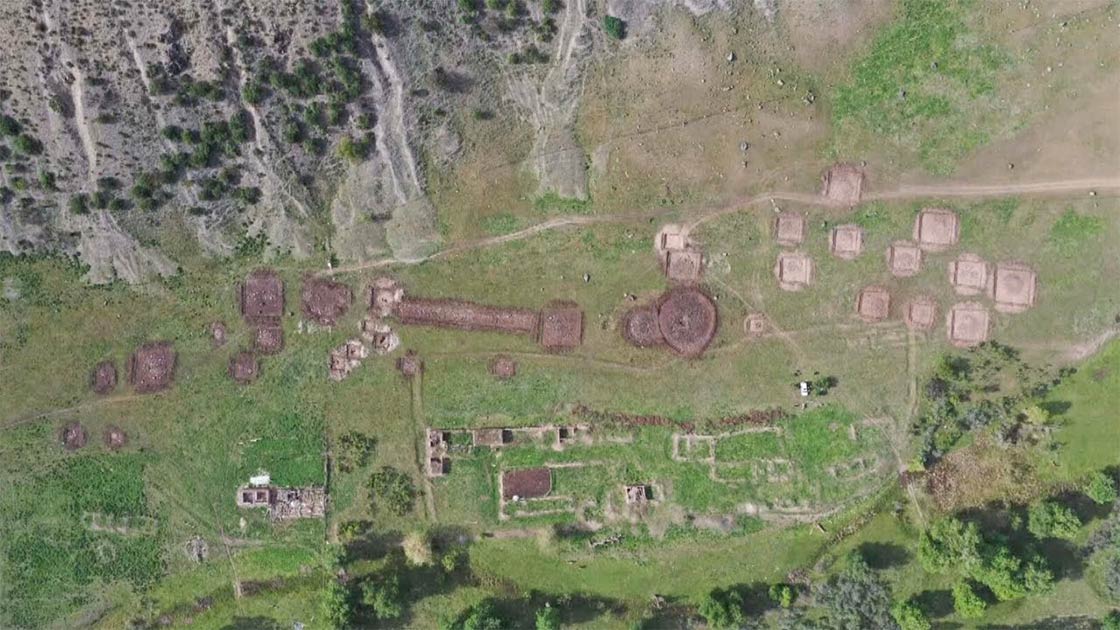Bronze Age Settlement Uncovered in China Reveals Silk Road Origins
Archaeologists working in the north-west of China have made a very important discovery in relation to the Silk Road’s origins and development. They have found the remains of a Bronze Age settlement on what would become the ancient world’s most famous trade route. This discovery could revolutionize our understanding of the origins of the Silk Road and those who lived on it.
The fascinating find was made in Xinjiang, in the Ili Valley, a very remote area. Experts from the Xinjiang Institute of Cultural Relics and Archaeology unearthed the settlement. In the valley there are some 30 tombs that date back to the Han dynasty (206 BC to 220 AD), an era of Chinese expansion into Central Asia, which was pivotal in the development of the Silk Road.
Nomad Tombs
The tombs are believed to have belonged to a nomadic people who once lived in the region. They are rectangular and have single chambers. While working here the experts came across the ancient settlement. According to The Daily Mail, ‘the experts discovered it by accident after noticing that the earth around one of the tombs was different’. They were working on the site as part of a rescue excavation to preserve the burial monuments.

Tombs of nomads were found at the site. (Xinjiang Institute of Archaeology)
The archaeologists began to excavate the area under the nomads’ tombs and came across something amazing. Some 1.6 feet (48.77 cm) under the burials they found an ancient site. They unearthed the remains of two large buildings that covered an area around 2000 square feet (185.81 sq. meters).
They also revealed three smaller buildings that covered an area of more than 500 square feet (46.45 sq. meters). Archaeology News Network quotes Ruan Rongqiu, who took part in the dig, as saying that the complete site measured “500 square metres (5,381 square feet) in size.” The team established that the “site corresponds to the Bronze Age (3,000 BC-1,200 BC),” according to CGTN.
A Bronze Age Settlement
Also uncovered were fragments of ceramic pottery and a massive amount of animal bones from cows, sheep, horses, and antelopes. There was evidence that fire was used at the site and that coal was used as a fuel by the inhabitants. This and the scale of the ruins would show that those who lived here were very sophisticated for the time.
Based on documentary sources, this settlement was located on what would later become the Silk Road. This was a trade route that connected China, India, and Persia and eventually went on to the Mediterranean. It was named after the most lucrative good traded on the road - silk made in China - which was very much in demand in Rome and later Byzantium.

The excavators found many pottery fragments. (Xinjiang Institute of Archaeology)
Merchants would travel the road in caravans, which was very dangerous, but fabulous profits could be made if they returned home safely. This trade route was crucial, not only for trade but also for facilitating the spread of new ideas and religions.
The Famous Silk Road’s Origins
It is believed that the Silk Road came into being about 200 BC and it continued with some interruptions until the Early Modern era. However, its origins are believed to lie in even earlier migration and trade routes, which were eventually connected to create the transcontinental Silk Road. There were a number of precursors to the Silk Road and these include routes used by nomads, such as the Scythians, to trade animals and goods, especially horses.
- Did Nomads and their Herds Carve Out the Silk Road?
- Koshoy Korgon: The Alluring Silk Road Fortress
- Discovery of Ancient Chinese City Rewrites History
The Daily Mail reports that experts have established that “people were moving domestic animals such as cattle, sheep and goat, across the high mountain corridors as long as 4000 years ago.” It is likely that the Bronze Age people who once lived in the settlement used these early routes that later became integral parts of the famed Silk Road.
Mr. Ruan is quoted by Archaeology News Network a saying that “This type of Bronze Age ruins is relatively rare in the area of Ili.” Therefore, it may provide clues on life and trade in the centuries before the emergence of the Silk Road. Archaeology News Network also reports Ruan as stating that “it could provide very important material for the research into the people living on the Eurasian Steppe in the Bronze Age.”
The site may also reveal information about migration patterns and trade, which could help historians to establish if the origins of the Silk Road ultimately lay in the Bronze Age.
Top image: This Bronze Age site in Xinjiang, China may help researchers discover more about the Silk Road’s origins. Source: CCTV
By Ed Whelan


















Comments
Actually the term 'silk-routes' is a better term as there were many trade destinations and ways of getting there......